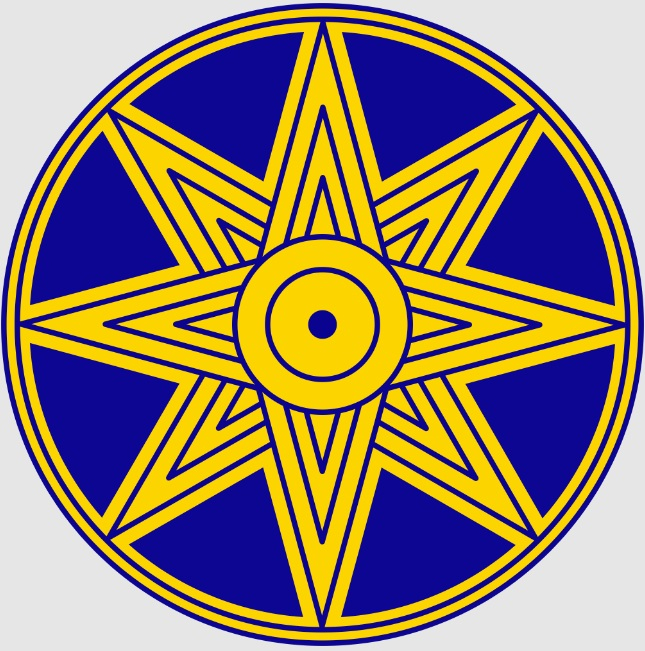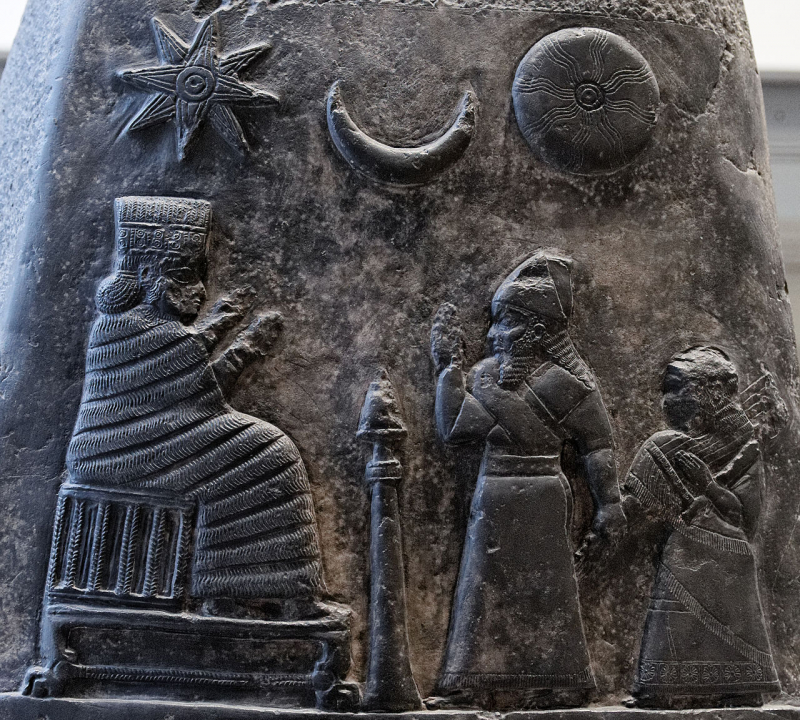The eight-pointed star was Inanna's most common symbol
The eight-pointed star was Inanna's most common symbol, however, the exact number of points varies. Six-pointed stars are fairly common, but their symbolic value is unknown. The eight-pointed star appears to have been associated with the heavens at first, but by the Old Babylonian Period (c. 1830 - c. 1531 BCE), it had come to be explicitly associated with the planet Venus, with which Ishtar was identified. Beginning around the same time, the star of Ishtar was usually surrounded by a circular disc. Slaves who toiled in Ishtar's temples were occasionally branded with the eight-pointed star seal in later Babylonian times. The eight-pointed star is sometimes shown on boundary stones and cylinder seals beside the crescent moon, which was a symbol of Sin (Sumerian Nanna), and the rayed solar disk, which was a symbol of Shamash (Sumerian Utu).
The doorpost of the storehouse, a traditional sign of fertility and plenty, was represented by Inanna's cuneiform ideogram, a hook-shaped twisted knot of reeds. The rosette was another prominent emblem of Inanna, and it was utilized as a symbol of Ishtar following their union. The rosette may have supplanted the eight-pointed star as Ishtar's major symbol during the Neo-Assyrian Period (911-609 BCE). The Ishtar temple in the city of Aur was embellished with many rosettes.











